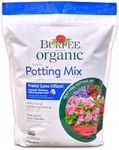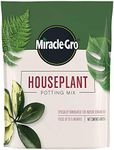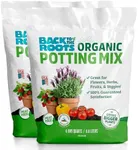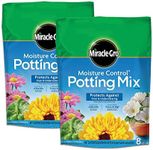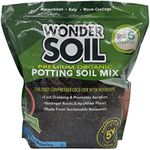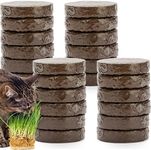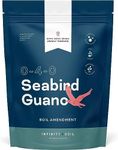Buying Guide for the Best Potting Soil For Indoor Plants
Choosing the right potting soil for your indoor plants is crucial for their health and growth. The right soil provides the necessary nutrients, proper drainage, and aeration that plants need to thrive. When selecting potting soil, consider the specific needs of your plants, such as their water requirements, root structure, and nutrient needs. Here are some key specifications to consider when choosing potting soil for indoor plants.Nutrient ContentNutrient content refers to the essential minerals and elements present in the soil that plants need for growth. This includes nitrogen, phosphorus, potassium, and trace elements like iron and magnesium. High nutrient content is important for the healthy development of plants. If you have plants that are heavy feeders, such as flowering plants or vegetables, look for potting soil with added fertilizers. For plants with lower nutrient needs, a standard potting mix without added fertilizers may be sufficient.
DrainageDrainage is the soil's ability to allow excess water to flow through it, preventing waterlogging and root rot. Good drainage is essential for most indoor plants to ensure their roots do not sit in water. Potting soils with materials like perlite, vermiculite, or sand improve drainage. If you have plants that prefer drier conditions, such as succulents or cacti, choose a potting mix with excellent drainage. For moisture-loving plants, a mix with moderate drainage is suitable.
AerationAeration refers to the soil's ability to allow air to reach the plant roots. Proper aeration is important for root respiration and overall plant health. Potting soils with components like peat moss, coconut coir, or bark chips provide good aeration. If you have plants with fine, delicate roots, ensure the soil is light and airy. For plants with thicker roots, a slightly denser mix can be used as long as it still provides adequate aeration.
Water RetentionWater retention is the soil's ability to hold moisture for plant use. This is important for maintaining consistent moisture levels, especially for plants that require regular watering. Potting soils with materials like peat moss or coconut coir have good water retention properties. If you have plants that need consistent moisture, such as ferns or tropical plants, choose a mix with high water retention. For plants that prefer to dry out between waterings, like succulents, opt for a mix with lower water retention.
pH LevelThe pH level of the soil indicates its acidity or alkalinity, which affects nutrient availability to plants. Most indoor plants prefer a slightly acidic to neutral pH (around 6.0 to 7.0). It's important to choose a potting soil with a pH level suitable for your specific plants. For example, acid-loving plants like azaleas or gardenias need a more acidic soil, while most other houseplants do well in neutral pH soil. Check the pH preference of your plants and select a potting mix accordingly.
Organic MatterOrganic matter in potting soil includes decomposed plant and animal materials that provide nutrients and improve soil structure. High organic matter content is beneficial for plant growth as it enhances nutrient availability and soil health. Look for potting soils with compost, worm castings, or other organic materials. If you prefer natural and sustainable gardening practices, choose a potting mix with a high percentage of organic matter. For less demanding plants, a standard mix with moderate organic content will suffice.
